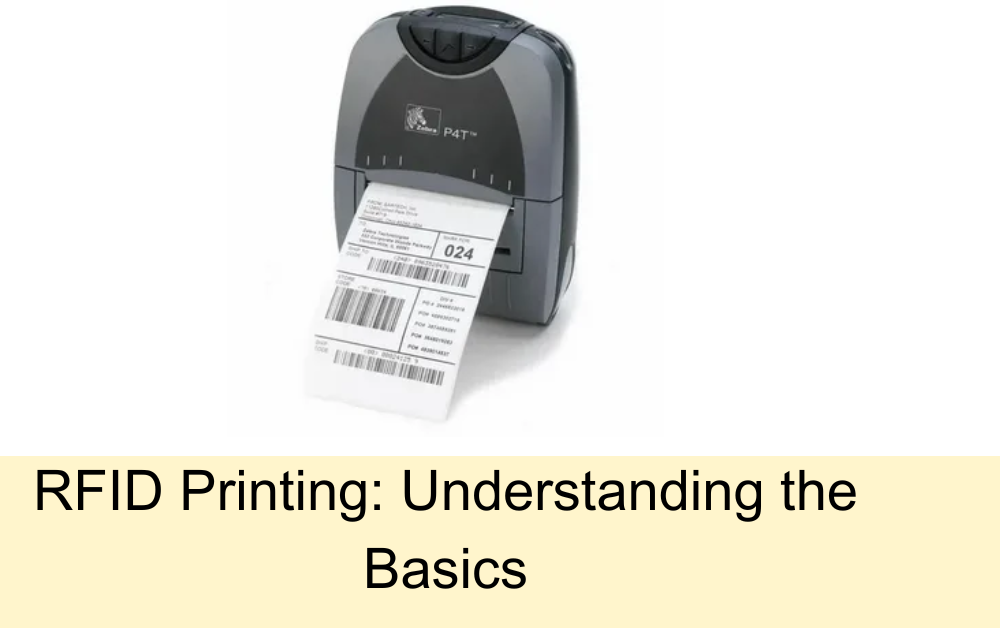RFID (Radio-Frequency Identification) technology has been quietly revolutionizing various industries for years. It’s the technology behind those small tags you might have seen on products in stores or even in your workplace. While RFID may sound complex, we’re here to break it down in simple terms and explore its basic principles.
What is RFID?
At its core, RFID is all about tracking and identifying objects or people using radio waves. It’s like giving everyday items a digital voice, allowing them to communicate their identity and status without any human intervention.
How Does RFID Work?
Let’s dive into the inner workings of RFID technology:
RFID Tags
- Tiny Data Carriers: RFID tags are small, often no bigger than a postage stamp. They contain a microchip and an antenna that work together to store and transmit information.
- Passive vs. Active Tags: There are two main types of RFID tags: passive and active. Passive tags rely on the energy from the RFID reader to transmit data, while active tags have their own power source, enabling them to transmit data more robustly and over longer distances.
RFID Readers
- The Communication Hub: RFID readers send out radio waves via an antenna. When these waves reach an RFID tag, they activate the tag’s microchip, causing it to transmit information back to the reader.
- Data Collection: The reader collects the transmitted data, which can include a unique identifier or other relevant information.
Database Integration
- Connecting the Dots: The collected data is then sent to a database, where it can be associated with other information. This integration enables real-time tracking and monitoring of tagged items.
Practical Applications
Now that we’ve covered the basics, let’s explore some real-world uses of RFID technology:
1. Retail Inventory Management
Retailers use RFID to keep track of their inventory more efficiently. By tagging each product, they can quickly check stock levels and reduce the chances of running out of popular items.
2. Access Control
Many offices and secure facilities use RFID badges for access control. Employees can simply wave their badges in front of a reader to gain entry, enhancing security and convenience.
3. Supply Chain Management
RFID plays a vital role in supply chain management by providing real-time visibility into the movement of goods. This helps companies optimize logistics and reduce errors.
4. Healthcare
In the healthcare industry, RFID is used for patient identification, medication tracking, and asset management. It enhances patient safety and streamlines hospital operations.
5. Library Automation
Libraries use RFID tags in books to simplify the checkout process. Patrons can quickly scan their books at self-checkout stations, making borrowing books a breeze.
Benefits of RFID
So, why should you care about RFID technology? Here are some compelling reasons:
1. Efficiency
RFID speeds up processes that involve tracking and identification. This efficiency translates into time and cost savings for businesses.
2. Accuracy
RFID eliminates human errors in tasks like inventory management. It ensures that data is captured and recorded accurately.
3. Enhanced Security
The use of RFID for access control and authentication enhances security by restricting access to authorized personnel only.
4. Improved Customer Experience
In retail, RFID enables faster checkouts and better stock availability, leading to a more satisfying shopping experience for customers.
5. Scalability
RFID systems can be easily scaled to meet the needs of both small businesses and large enterprises.
Challenges and Concerns
While RFID offers many benefits, it’s essential to be aware of potential challenges and concerns:
Privacy
RFID technology can raise privacy concerns when used for tracking people or personal items. Proper safeguards and regulations are necessary to address these issues.
Cost
Implementing RFID systems can be costly, particularly for small businesses. However, the long-term benefits often outweigh the initial investment.
Compatibility
Ensuring compatibility between different RFID systems can be challenging, especially in global supply chains.
Conclusion
RFID printing and technology, in general, continue to evolve and find new applications in various industries. Understanding the basics of RFID can help individuals and businesses harness its potential for improved efficiency, accuracy, and security.
In this blog, we’ve demystified RFID, explaining how it works, its practical uses, benefits, and potential challenges. As RFID technology continues to advance, it’s essential to stay informed about its latest developments and applications. Whether you’re a retailer, healthcare provider, or simply curious about this technology, RFID is undoubtedly shaping the way we interact with the world around us.


